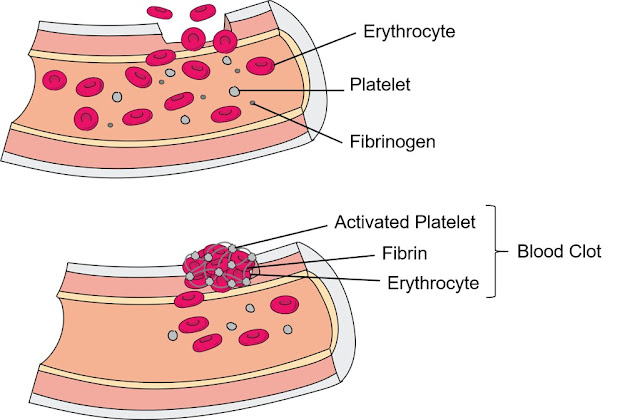Coagulation, also known as blood clotting, is an essential process that helps to stop bleeding when a blood vessel is injured. It is a complex process that involves the interaction of several proteins, cells, and chemicals in the blood.

The process of coagulation begins when a blood vessel is damaged. When this happens, the inner lining of the blood vessel, called the endothelium, is exposed to the blood. The endothelium releases a chemical called von Willebrand factor, which helps to activate platelets, which are small cells that are essential for blood clotting.
The activated platelets release chemicals called thromboxanes and prostaglandins, which help to stimulate the production of thrombin. Thrombin is an enzyme that helps to convert a protein called fibrinogen into fibrin. Fibrin is a long, thin protein that forms a mesh-like structure that helps to hold the platelets in place and stop the bleeding.
As the fibrin mesh continues to form, it becomes stronger and more stable, eventually forming a blood clot. The blood clot helps to seal the damaged blood vessel and prevent further bleeding.
The process of coagulation is regulated by several factors, including the presence of various proteins and chemicals in the blood. Some of these proteins, called clotting factors, are essential for the coagulation process to occur. Deficiencies or abnormalities in these clotting factors can lead to bleeding disorders, such as hemophilia.
In summary, the process of coagulation involves the activation of platelets, the production of thrombin, and the conversion of fibrinogen into fibrin, which helps to seal the damaged blood vessel and stop the bleeding. It is a complex process that is essential for maintaining the body's ability to stop bleeding and prevent excessive blood loss.
